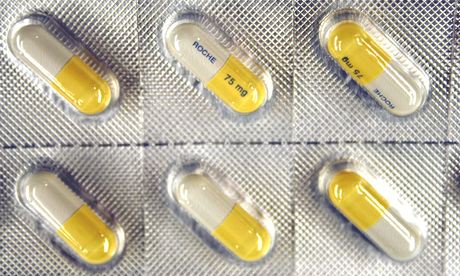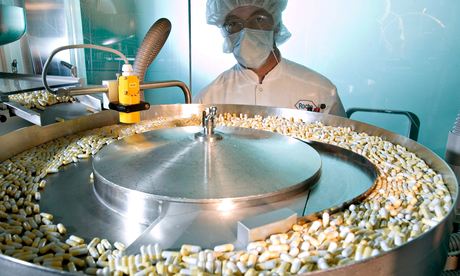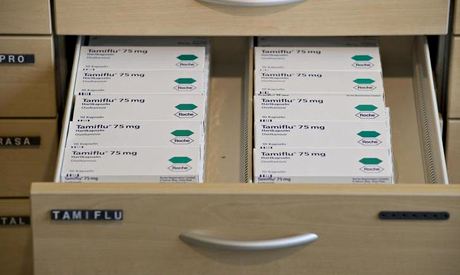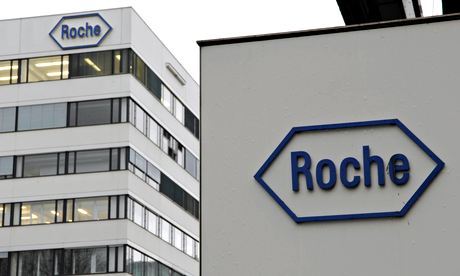Feroz Ali & Sudarsan Rajagopal In The Hindu
In 2005, India made some remarkable amendments to the Indian Patents Act of 1970, to keep medicines affordable in the country. Since then we have faced a significant blowback not just from the global pharmaceutical industry but also from developed world including from the U.S. and the European Union.
At the heart of the matter are the strong standards for patents which India introduced to promote genuine innovation across all fields of technology, in perfect compliance with the World Trade Organisation (WTO) norms. In contrast, developed countries have weaker standards as a result of incessant lobbying by corporate behemoths. Twelve years later, we now know what it means: India rejects bad patents in far greater number than developed countries.
The background
The findings of a new study by us which examined all 1,723 pharmaceutical applications rejected by the Indian Patent Office (IPO) between 2009 and 2016 have been an eye-opener.
Section 3(d) of the Indian Patents Act, a provision introduced to restrict the patenting of new forms of known pharmaceutical substances, became the subject of international attention after its use in rejecting a patent application by Novartis for the anti-cancer drug, Gleevec. We found that exceptions to patentability in Section 3 of the Act, which includes Section 3(d), were responsible for 65% of all rejected pharmaceutical patent applications.
Over its short lifetime, Section 3(d) has survived a challenge to its constitutionality before the Madras High Court, and Novartis’s fight against the rejection of its patent that went to the Supreme Court. Both courts ruled decisively to uphold the legality of Section 3(d). The United States Trade Representative has also repeatedly rebuked India for this provision in its Special 301 Report, despite its perfect compliance with WTO norms. While the world’s attention is still fixed on this legal experiment that the Indian Parliament introduced into law, there has been a dearth of information on how the IPO has applied Section 3(d). We found that it filters the bad from the good, with the lowest possible administrative and financial burden.
Rejected using Section 3(d)
An astonishing 45% of all rejected pharmaceutical patent applications cited Section 3(d) as a reason for rejection: the applications were identified as mere variants of known compounds that lacked a demonstrable increase in therapeutic value.
Between 1995 and 2005, prior to our new law, India provided a temporary measure to receive patent applications for pharmaceutical products at the IPO, called the mailbox system. Though introduced in 2005, the use of Section 3(d) gradually increased from 2009 when mailbox applications were examined. The spike coincides with the Supreme Court’s ruling in the Novartis case, in April 2013. It would appear that this judgment provided legal certainty to Indian patent law in general, and Section 3(d) in particular, enabling the IPO to weed out trivial innovations.
At the patent office
In the last decade, we found that the IPO rejected about 95% of all pharmaceutical patent applications on its own. Only 5% were through the intervention of a third party, such as a pre-grant opponent. Our basic patentability criteria, that the invention should be new, involve an inventive step (also known as non-obviousness), and should be capable of industrial application, were the most frequently used grounds for rejection, followed by the exceptions to patentability grounds in Section 3.
Section 3(d) invaluably equips the IPO with a yardstick to evaluate applications that are merely trivial innovations over existing technology. In cases where the invention is a variant of a known substance, the criterion for patentability is proof of a necessary improvement in its performance for its designated use, i.e., increased efficacy. In the context of pharmaceuticals, as was the case involving Novartis, this translates to evidence of an improvement in therapeutic efficacy. In other words, trivial innovation must result in a far better product in order to qualify for patent protection.
Within the arcane world of patent law, an argument against provisions such as Section 3(d) is that it is no more than an extension of one of the basic requirements of patentability: non-obviousness. Certainly, for an application to be deemed non-obvious, it has to establish a technical advance over what was known before.
But non-obviousness standards are more effectively applied in invalidity proceedings before a court of law than by officials at the IPO. The advantage that a provision such as Section 3(d) provides is the ability to question an application at the IPO itself without having to go through expensive and time-consuming litigation. The high cost of litigation poses significant barriers. Cases are often settled before reaching a conclusion, in pay-for-delay settlements negotiated by patent owners, where generic manufacturers are essentially paid to stay off the market. Patent litigation is expensive, but it is the patient who eventually pays a higher price — by being subject to exorbitant medicine prices, driven by the unmerited exclusivity that bad patents create.
As a check
Without Section 3(d), the Indian public would have to bear the burden of invalidating a bad patent through litigation.
India is certainly not alone in facing two connected challenges: constrained government budgets and urgent public health needs. As Section 3(d) has been efficient in separating the bad patents from the good in India, it would be a wise move for other developing countries, grappling with similar challenges, to incorporate similar provisions in their law.
'People will forgive you for being wrong, but they will never forgive you for being right - especially if events prove you right while proving them wrong.' Thomas Sowell
Search This Blog
Showing posts with label pharma. Show all posts
Showing posts with label pharma. Show all posts
Wednesday, 27 December 2017
Thursday, 10 April 2014
What the Tamiflu saga tells us about drug trials and big pharma
We now know the government's Tamiflu stockpile wouldn't have done us much good in the event of a flu epidemic. But the secrecy surrounding clinical trials means there's a lot we don't know about other medicines we take

Tamiflu capsules. Photograph: Per Lindgren/REX
Today we found out that Tamiflu doesn't work so well after all. Roche, the drug company behind it, withheld vital information on its clinical trials for half a decade, but the Cochrane Collaboration, a global not-for-profit organisation of 14,000 academics, finally obtained all the information. Putting the evidence together, it has found that Tamiflu has little or no impact on complications of flu infection, such as pneumonia.
That is a scandal because the UK government spent £0.5bn stockpiling this drug in the hope that it would help prevent serious side-effects from flu infection. But the bigger scandal is that Roche broke no law by withholding vital information on how well its drug works. In fact, the methods and results of clinical trials on the drugs we use today are still routinely and legally being withheld from doctors, researchers and patients. It is simple bad luck for Roche that Tamiflu became, arbitrarily, the poster child for the missing-data story.
And it is a great poster child. The battle over Tamiflu perfectly illustrates the need for full transparency around clinical trials, the importance of access to obscure documentation, and the failure of the regulatory system. Crucially, it is also an illustration of how science, at its best, is built on transparency and openness to criticism, because the saga of the Cochrane Tamiflu review began with a simple online comment.
In 2009, there was widespread concern about a new flu pandemic, and billions were being spent stockpiling Tamiflu around the world. Because of this, the UK and Australian governments specifically asked the Cochrane Collaboration to update its earlier reviews on the drug. Cochrane reviews are the gold-standard in medicine: they summarise all the data on a given treatment, and they are in a constant review cycle, because evidence changes over time as new trials are published. This should have been a pretty everyday piece of work: the previous review, in 2008, had found some evidence that Tamiflu does, indeed, reduce the rate of complications such as pneumonia. But then a Japanese paediatrician called Keiji Hayashi left a comment that would trigger a revolution in our understanding of how evidence-based medicine should work. This wasn't in a publication, or even a letter: it was a simple online comment, posted informally underneath the Tamiflu review on the Cochrane website, almost like a blog comment.
 The UK government spent £0.5bn stockpiling Tamiflu. Photograph: Hanodut/EPA
The UK government spent £0.5bn stockpiling Tamiflu. Photograph: Hanodut/EPA
Cochrane had summarised the data from all the trials, explained Hayashi, but its positive conclusion was driven by data from just one of the papers it cited: an industry-funded summary of 10 previous trials, led by an author called Kaiser. From these 10 trials, only two had ever been published in the scientific literature. For the remaining eight, the only available information on the methods used came from the brief summary in this secondary source, created by industry. That's not reliable enough.
This is science at its best. The Cochrane review is readily accessible online; it explains transparently the methods by which it looked for trials, and then analysed them, so any informed reader can pull the review apart, and understand where the conclusions came from. Cochrane provides an easy way for readers to raise criticisms. And, crucially, these criticisms did not fall on deaf ears. Dr Tom Jefferson is the head of the Cochrane respiratory group, and the lead author on the 2008 review. He realised immediately that he had made a mistake in blindly trusting the Kaiser data. He said so, without defensiveness, and then set about getting the information needed.
First, the Cochrane researchers wrote to the authors of the Kaiser paper. By reply, they were told that this team no longer had the files: they should contact Roche. Here theproblems began. Roche said it would hand over some information, but the Cochrane reviewers would need to sign a confidentiality agreement. This was tricky: Cochrane reviews are built around showing their working, but Roche's proposed contract would require them to keep the information behind their reasoning secret from readers. More than this, the contract said they were not allowed to discuss the terms of their secrecy agreement, or publicly acknowledge that it even existed. Roche was demanding a secret contract, with secret terms, requiring secrecy about the methods and results of trials, in a discussion about the safety and efficacy of a drug that has been taken by hundreds of thousands of people around the world, and on which governments had spent billions. Roche's demand, worryingly, is not unusual. At this point, many in medicine would either acquiesce, or give up. Jefferson asked Roche for clarification about why the contract was necessary. He never received a reply.
Then, in October 2009, the company changed tack. It would like to hand over the data, it explained, but another academic review on Tamiflu was being conducted elsewhere. Roche had given this other group the study reports, so Cochrane couldn't have them. This was a non-sequitur: there is no reason why many groups should not all work on the same question. In fact, since replication is the cornerstone of good science, this would be actively desirable.
Then, one week later, unannounced, Roche sent seven documents, each around a dozen pages long. These contained excerpts of internal company documents on each of the clinical trials in the Kaiser meta-analysis. It was a start, but nothing like the information Cochrane needed to assess the benefits, or the rate of adverse events, or fully to understand the design of the trials.
 Packets of Tamiflu in a drawer at a German pharmacy. Photograph: Wolfgang Rattay/Reuters
Packets of Tamiflu in a drawer at a German pharmacy. Photograph: Wolfgang Rattay/Reuters
At the same time, it was rapidly becoming clear that there were odd inconsistencies in the information on this drug. Crucially, different organisations around the world had drawn vastly different conclusions about its effectiveness. The US Food and Drug Administration (FDA) said it gave no benefits on complications such as pneumonia, while the US Centers for Disease Control and Prevention said it did. The Japanese regulator made no claim for complications, but the European Medicines Agency (EMA) said there was a benefit. There are only two explanations for this, and both can only be resolved by full transparency. Either these organisations saw different data, in which case we need to build a collective list, add up all the trials, and work out the effects of the drug overall. Or this is a close call, and there is reasonable disagreement on how to interpret the trials, in which case we need full access to their methods and results, for an informed public debate in the medical academic community.
This is particularly important, since there can often be shortcomings in the design of a clinical trial, which mean it is no longer a fair test of which treatment is best. We now know this was the case in many of the Tamiflu trials, where, for example, participants were sometimes very unrepresentative of real-world patients. Similarly, in trials described as "double blinded" – where neither doctor nor patient should be able to tell whether they're getting a placebo or the real drug – the active and placebo pills were different colours. Even more oddly, in almost all Tamiflu trials, it seems a diagnosis of pneumonia was measured by patients' self-reporting: many researchers would have expected a clear diagnostic algorithm, perhaps a chest x-ray, at least.
Since the Cochrane team were still being denied the information needed to spot these flaws, they decided to exclude all this data from their analysis, leaving the review in limbo. It was published in December 2009, with a note explaining their reasoning, and a small flurry of activity followed. Roche posted their brief excerpts online, and committed to make full study reports available. For four years, they then failed to do so.
During this period, the global medical academic community began to realise that the brief, published academic papers on trials – which we have relied on for many years – can be incomplete, and even misleading. Much more detail is available in a clinical study report (CSR), the intermediate document that stands between the raw data and a journal article: the precise plan for analysing the data statistically, detailed descriptions of adverse events, and so on.
By 2009, Roche had shared just small portions of the CSRs, but even this was enough to see there were problems. For example, looking at the two papers out of 10 in the Kaiser review that were published, one said: "There were no drug-related serious adverse events", and the other doesn't mention adverse events. But in the CSR documents shared on these same two studies, 10 serious adverse events were listed, of which three are classified as being possibly related to Tamiflu.
 Roche HQ in Basel, Switzerland. Photograph: Bloomberg/Bloomberg via Getty Images
Roche HQ in Basel, Switzerland. Photograph: Bloomberg/Bloomberg via Getty Images
By setting out all the known trials side by side, the researchers were able to identify peculiar discrepancies: for example, the largest "phase three" trial – one of the large trials that are done to get a drug on to the market – was never published, and is rarely mentioned in regulatory documents.
The chase continued, and it exemplifies the attitude of industry towards transparency. In June 2010, Roche told Cochrane it was sorry, but it had thought they already had what they wanted. In July, it announced that it was worried about patient confidentiality. By now, Roche had been refusing to publish the study reports for a year. Suddenly, it began to raise odd personal concerns. It claimed that some Cochrane researchers had made untrue statements about the drug, and about the company, but refused to say who, or what, or where. "Certain members of Cochrane Group," it said, "are unlikely to approach the review with the independence that is both necessary and justified." This is hard to credit, but even if true, it should be irrelevant: bad science is often published, and is shot down in public, in academic journals, by people with good arguments. This is how science works. No company or researcher should be allowed to choose who has access to trial data. Still Roche refused to hand over the study reports.
Then Roche complained that the Cochrane reviewers had begun to copy in journalists, including me, on their emails when responding to Roche staff. At the same time, the company was raising the broken arguments that are eerily familiar to anyone who has followed the campaign for greater trials transparency. Key among these was one that cuts to the core of the culture war between evidence-based medicine, and the older "eminence-based medicine" that we are supposed to have left behind. It is simply not the job of academics to make these decisions about benefit and risk, said Roche, it is the job of regulators.
This argument fails on two fronts. First, as with many other drugs, it now seems that not even the regulators had seen all the information on all the trials. But more than that, regulators miss things. Many of the most notable problems with medicines over the past few years – with the arthritis drug Vioxx; with the diabetes drug rosiglitazone, marketed as Avandia; and with the evidence base for Tamiflu – weren't spotted primarily by regulators, but rather by independent doctors and academics. Regulators don't miss things because they are corrupt, or incompetent. They miss things because detecting signals of risk and benefit in reviews of clinical trials is a difficult business and so, like all difficult questions in science, it benefits from having many eyes on the problem.
While the battle for access to Tamiflu trials has gone on, the world of medicine has begun to shift, albeit at a painful pace, with the European Ombudsman and several British select committees joining the push for transparency. The AllTrials campaign, which I co-founded last year, now has the support of almost all medical and academic professional bodies in the UK, and many more worldwide, as well as more than 100 patient groups, and the drug company GSK. We have seen new codes of conduct, and European legislation, proposing improvements in access: all riddled with loopholes, but improvements nonetheless. Crucially, withholding data has become a headline issue, and much less defensible.
Last year, in the context of this wider shift, under ceaseless questions from Cochrane and the British Medical Journal, after half a decade, Roche finally gave Cochrane the information it needed.
So does Tamiflu work? From the Cochrane analysis – fully public – Tamiflu does not reduce the number of hospitalisations. There wasn't enough data to see if it reduces the number of deaths. It does reduce the number of self-reported, unverified cases of pneumonia, but when you look at the five trials with a detailed diagnostic form for pneumonia, there is no significant benefit. It might help prevent flu symptoms, but not asymptomatic spread, and the evidence here is mixed. It will take a few hours off the duration of your flu symptoms. But all this comes at a significant cost of side-effects. Since percentages are hard to visualise, we can make those numbers more tangible by taking the figures from the Cochrane review, and applying them. For example, if a million people take Tamiflu in a pandemic, 45,000 will experience vomiting, 31,000 will experience headache and 11,000 will have psychiatric side-effects. Remember, though, that those figures all assume we are only giving Tamiflu to a million people: if things kick off, we have stockpiled enough for 80% of the population. That's quite a lot of vomit.
Roche has issued a press release saying it contests these conclusions, but giving no reasons: so now we can finally let science begin. It can shoot down the details of the Cochrane review – I hope it will – and we will edge towards the truth. This is what science looks like. Roche also denies being dragged to transparency, and says it simply didn't know how to respond to Cochrane. This, again, speaks to the pace of change. I have no idea why it was withholding information: but I rather suspect it was simply because that's what people have always done, and sharing it was a hassle, requiring new norms to be developed. That's reassuring and depressing at the same time.
Should we have spent half a billion on this drug? That's a tricky question. If you picture yourself in a bunker, watching a catastrophic pandemic unfold, confronting the end of human civilisation, you could probably persuade yourself that Tamiflu might be worth buying anyway, even knowing the risks and benefits. But that final clause is the key. We often choose to use treatments in medicine, knowing that they have limited benefit, and significant side-effects: but we make an informed decision, balancing the risks and benefits for ourselves.
And in any case, that £500m is the tip of the iceberg. Tamiflu is a side show, the one place where a single team of dogged academics said "enough" and the company caved in. But the results of clinical trials are still being routinely and legally withheld on the medicines we use today and nothing about a final answer on Tamiflu will help plug this gaping hole.
 Star anise provides the principal component of Tamiflu. Photograph: Adrian Bradshaw/EPA
Star anise provides the principal component of Tamiflu. Photograph: Adrian Bradshaw/EPA
More importantly, for all that there is progress, so far we have only sentiment, and half measures. None of the changes to European legislation or codes of conduct get us access to the information we need, because they all refer only to new trials, so they share a loophole that excludes – remarkably – all the trials on all the medicines we use today, and will continue to use for decades. To take one concrete and topical example: they wouldn't have made a blind bit of difference on Tamiflu. We have seen voluntary pledges for greater transparency from many individual companies – Johnson & Johnson, Roche,GSK, now Roche, and more – which are welcome, but similar promises have been given before, and then reversed a few years later.
This is a pivotal moment in the history of medicine. Trials transparency is finally on the agenda, and this may be our only opportunity to fix it in a decade. We cannot make informed decisions about which treatment is best while information about clinical trials is routinely and legally withheld from doctors, researchers, and patients. Anyone who stands in the way of transparency is exposing patients to avoidable harm. We need regulators, legislators, and professional bodies to demand full transparency. We need clear audit on what information is missing, and who is withholding it.
Finally, more than anything – because culture shift will be as powerful as legislation – we need to do something even more difficult. We need to praise, encourage, and support the companies and individuals who are beginning to do the right thing. This now includes Roche. And so, paradoxically, after everything you have read above, with the outrage fresh in your mind, on the day when it feels harder than any other, I hope you will join me in saying: Bravo, Roche. Now let's do better.
Friday, 6 July 2012
Big pharma is cut out by India's plan to bring medicine to masses
Ambitious $5bn push deals blow to global firms with focus on generic alternatives above branded drugs
India is planning a multibillion-dollar push to bring free medicines to the hundreds of millions of its citizens who, despite the country's economic revival, still languish without access to the very basics of health care.
The $5bn initiative, which is slated to be rolled out by the end of this year, will offer 348 essential drugs to patients across the country. In a blow to the West's big pharmaceutical firms, the planned scheme will largely cut out branded drugs, opting instead for cheaper generic alternatives.
News of the plan comes as the Congress-led administration in Delhi attempts to shore up public support after a raft of corruption scandals and crushing electoral losses in state polls. A recent report confirming a slowdown in economic growth has only served to sharpen criticism of the government.
Now, Delhi is plotting a multi-billion dollar health-care drive, using its network of government-funded hospitals and clinics to deliver free drugs across a country where, despite the much-vaunted boom of recent years, more than two million young children die every year from preventable infections, according to Unicef.
Infant mortality stands at 63 per 1,000 live births, while a recent paper in the Lancet medical journal said that of the nearly five million children under five who succumbed to preventable diseases such as pneumonia, diarrhoea and malaria in 2010, almost half had come from five countries: Nigeria, the Democratic Republic of Congo, Pakistan and, notably, China and India.
All the while, the Indian state spends so little on health care as a proportion of GDP that only a handful of countries fare worse, according to the OECD.
The bulk of the cash for the free medicine plan will come from central coffers, while state governments will be asked to shell out an additional third of the required funds. The Ministry of Health and Family Welfare said it had put forward proposals worth around $3.64bn. The additional funding – from the states – will boost the investment to around $4.9bn, signalling, if approved, "a giant step in vastly expanding the access to medicines", the Ministry said. A template already exists in the western state of Rajasthan and Tamil Nadu in the south, where health schemes are reported to have been successful.
The focus on generic medicines chimes both with the need for affordability and the dynamics of India's pharmaceutical market. Generics – or cheaper copies of expensive branded medicines whose patents have run out – accounted for around 90 per cent of the total drug sales in the country in 2010, according to Reuters data.
The gulf between the cost of branded drugs and generic alternatives is often vast. The Rajasthan state government, for instance, buys the generic version of a popular cholesterol drug for just over 6 rupees (7p) for a strip of 10 tablets, according to official figures quoted by India's Economic Times newspaper. In contrast, consumers opting for a branded alternative face costs of 103 rupees.
Although reports indicate that doctors participating in the planned scheme will be able to use 5 per cent of the sanctioned funds to buy medicines absent from the approved list of 348 generic drugs, the initiative presents a fresh challenge for global pharmaceutical giants such as GlaxoSmithKline and Pfizer.
Big pharma, as that end of the industry is known, is already struggling to forge new avenues for growth. Being locked out of a major initiative in a key emerging market won't help.
"Without a doubt, it is a considerable blow to an already beleaguered industry, recently the subject of several disadvantageous decisions in India," KPMG's European head of chemicals and pharmaceuticals, Chris Stirling, told Reuters.
"Pharmaceutical firms are likely to rethink their emerging markets strategies carefully to take account of this development, and any similar copycat moves across other geographies."
Big Pharma buying their way out of criminal charges
05 July 2012, 04:19 PM IST
The record-setting settlement has raised several questions about the
system of justice. What can the $3 billion fine for GSK mean to people who have
been affected adversely or have even lost loved ones because of the side
effects of drugs, which GSK failed to report? Is justice served in allowing
offenders to buy their way out?
What about the people in GSK who took the decisions to not report safety
concerns or to bribe doctors to push the drugs for uses not approved by the
regulating agency, the Food and Drug Administration (FDA)?
The hefty fine settles criminal and civil charges of unlawful promotion
of certain drugs including failure to report safety data and concerns about
side effects, and for alleged false price reporting practices.
While $3 billion might be a record settlement, is it that hefty? Is it
really hard on the company? Take the case of Avandia, an oral anti-diabetic,
one of the drugs GSK is charged with marketing illegally. Avandia marketed
since 1999 raked in over $2 billion annually. GSK is also charged with unlawful
promotion of Paxil, an anti-depressant. On the market since 1994, Paxil too
brought in over $2 billion annually. These two drugs alone helped GSK rake in
several billions every year for over a decade. This is not even counting all
the other drugs that are part of this settlement such as Wellbutrin, Advair,
Imitrex, Lotronex, Flovent and Valtrex and the billions they must have earned
for GSK. For being able to net sales worth so many billions, a one-time
settlement of $3 billion does seem like a small price to pay to do big
business.
Most major pharma companies have been accused of bribing doctors, hiding
side effects of drugs and promoting drugs for uses not approved by the FDA,
called off-label marketing. In 2009, Pfizer had set the record paying $2.3
billion fines for illegal marketing of 13 different drugs. In the same year,
Eli Lily had to pay $1.4 billion over the marketing of Zyprexa, an
anti-psychotic. Astra Zeneca and Novartis too have had to settle charges with
huge fines. Over 180 pharmaceutical fraud cases, covering more than 500 drugs,
are now under investigation by the U.S. Department of Justice.
Obviously, the continuing violations by pharmaceutical companies,
despite such huge fines, shows that these fines are no deterrent to the
companies. It is said that, to the industry, the hefty fines have simplybecome
a cost of doing business.
Director of the Public Citizen’s Health Research Group, Dr Sidney Wolfe
pointed out that the settlement was nothing new for GSK, which like many pharma
companies has been a repeat offender. “Until more meaningful penalties and the
prospect of jail time for company heads who are responsible for such activity
become commonplace, companies will continue defrauding the government and
putting patients’ lives in danger.”
In this context, unctuous statements by the US administration about the
“historic” multi-billion dollar settlement being “a sign of the US government’s
firm commitment to protecting the American people and holding accountable those
who commit health care fraud ” merely masks the fact that companies and the
executives are being allowed to buy their way out of punishment for willful and
deliberate harm they cause to people.
Subscribe to:
Comments (Atom)

